Ceremonial cocoa. What is it? How to prepare? – 5 recipes

Featured products Learn more about our offer
View productsWhat is ceremonial cacao?
The cacao tree is a native plant of South America, which has been utilized by indigenous inhabitants of the continent for thousands of years, as evidenced by traces of cacao use found in present-day Ecuador. The Maya and Aztec societies, traditionally inhabiting Central and South America, viewed cacao seeds primarily as food, but the plant and its fruits also held immense symbolic significance for them. Access to cacao beverages could indicate a person’s status, and in the beliefs of the Aztecs and Mayans, cacao served ritual or ceremonial purposes, with cacao products attributed to divine origins and supernatural properties. Moreover, South American cultures also used cacao beans as a form of currency. In one form or another, the significance of this product in pre-Columbian cultures was invaluable—evidenced, for example, by an archaeological find of a massive 4-litre cacao drink cup. And suddenly, the phrase “just one more cup” takes on a whole different meaning!
Learn more about the history of cacao in this article.
Here we will address the question: what is ceremonial cacao? Ceremonial cacao is nothing but unprocessed cocoa without any additives. These are pure ground cacao beans, which, when solidified, take the form of hard but crumbly blocks.
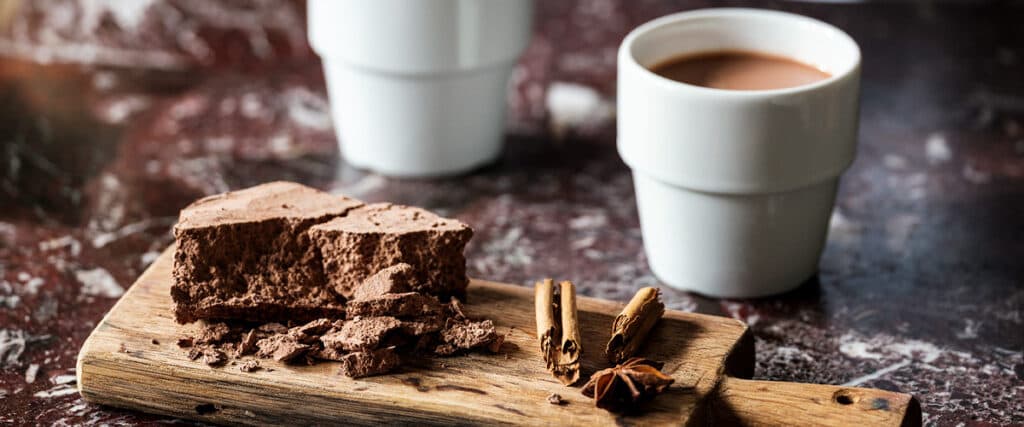

Ceremonial cacao in blocks
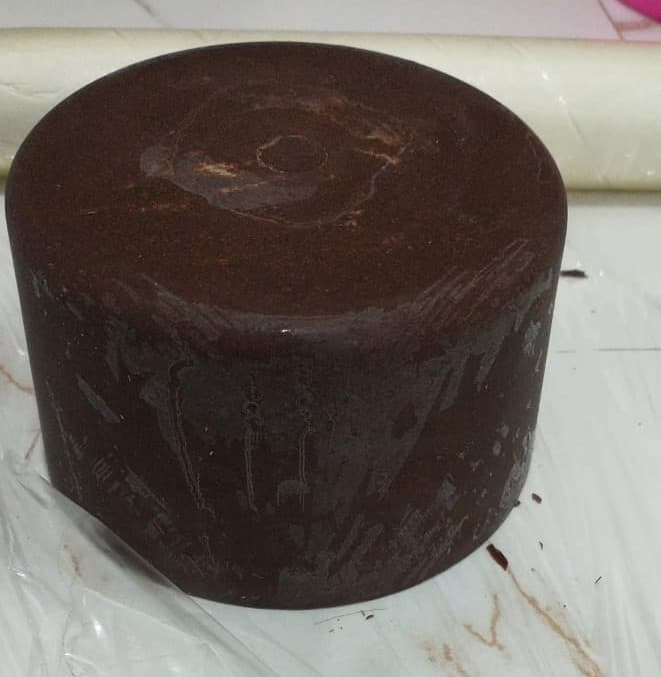

Mexican ceremonial cocoa
But why that specific name? This term arises from the fact that such cocoa is used in cacao ceremonies, where people come together to consume the cacao drink. In practice, however, ceremonial cacao could be described by another name: it is genuine cacao. Genuine in the sense that nothing has been taken away from it, everything contained in the cacao beans is preserved. The product we typically find in our kitchens is usually low-fat cacao powder (e.g., 11%). What we’re talking about here is full-fat cocoa. Because the whole secret lies in the fat: it’s where beneficial substances like phenylethylamine, anandamide, and theobromine are dissolved. So, full-fat cacao is the pure essence of health from cacao beans!
Guayaquil cacao plantation and fruit
Cacao ceremony
A cacao ceremony refers to a gathering of enthusiasts of such full-fat cacao, during which larger doses are consumed (about 40-50g per person). Such an amount of cacao has a very pleasant effect on mood: people relax, have a better mood, and want to dance, sing, and hug – which is why cacao ceremonies are great for bringing people together. Real cacao guarantees an intense, deep flavour, which, when shared with others, becomes even more vibrant. It’s worth joining or even organizing a cacao ceremony with loved ones – but it’s a good idea to prepare beforehand by reading a bit more about the types of ceremonial cacao available and various recipes for preparing the drink!
Types of cacao
Traditionally, it is accepted that there are three basic species of cacao, namely:
- Criollo
- Trinitario
- Forastero
However, this classification is very, very simplified and definitely does not fully reflect reality, as the cacao tree readily crosses with each other, and even within one plantation, or even a single row, we can encounter many different cacao varieties. In Peru alone, researchers have distinguished as many as 10 cacao species.
You can read more about the species and types of cocoa here – we’ll take a look at these three basic branches for the moment. And let’s answer the question: which ceremonial cacao is the best? Criollo, Trinitario, or maybe Forastero?
There’s a fairly popular belief that only cacao derived from the criollo variety deserves the noble title of ceremonial. However, this belief is mistaken because ceremonial cacao can be prepared from the fruits of practically any cacao variety – although, of course, it will differ in taste. For example, full-fat cacao from the criollo variety is less bitter than Forastero, which can be either a flaw or an advantage – it all depends on taste!
How to make ceremonial cacao – recipe?
The recipe for full-fat cacao begins when the raw beans are extracted from the cocoa fruit and enclosed in special crates, where they undergo fermentation for several days. This stage largely determines the final taste of the product – even more so than the cacao variety itself. Therefore, the cacao fermentation process should be carried out with particular care and at the right temperatures.
After fermentation, it’s smooth sailing – the cacao beans undergo drying and grinding, with grinding ideally done at the right temperature (around 40 degrees Celsius). The question is: can ceremonial cacao also be made at home? Of course! However, we will not, of course, subject the grains to fermentation at home. After purchasing pre-processed cacao beans, we roast them in a pan, then remove the shells and grind the cacao: either in a grinder or more traditionally – in a mortar and pestle. The video below shows how you can also do this using a regular stone. Preparing raw cacao to make ceremonial cacao is easy and fun.
Grinding cacao beans on a stone
Milk chocolate
However, if we have already prepared or simply purchased ready-made ceremonial cacao, there are many ways we can make a drink from it! Real cacao is said to work and taste best in the traditional form used by Native Americans. Mix about 10-20 grams of ceremonial cocoa block with water or plant milk(about 250 ml) and season with chilli, vanilla, cinnamon, or cardamom according to preference. The cacao block should be lightly crushed with a knife beforehand. You can sweeten the whole thing with honey.
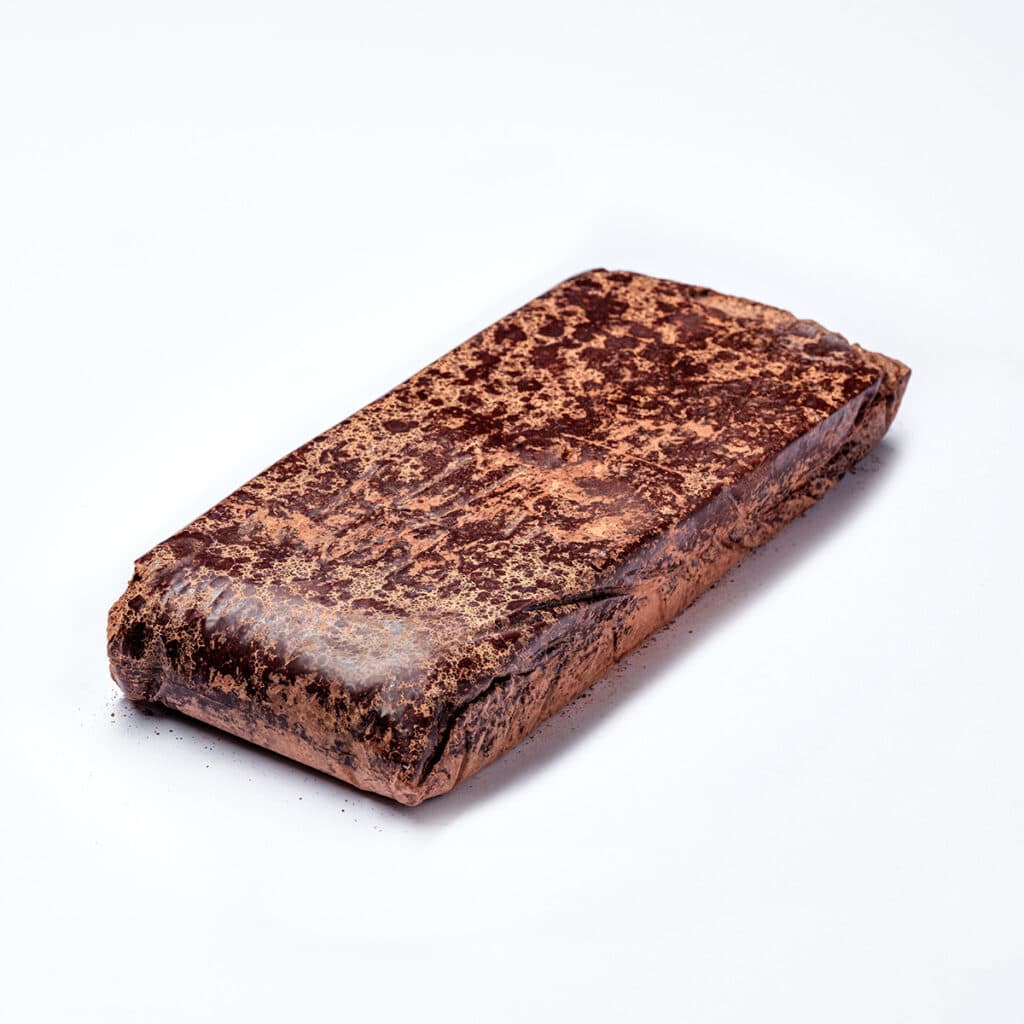

However, this is not the only way to prepare a cacao drink! We advise you to try them all, as each one changes the final resulting flavour of the drink.
5 recipes for a drink made from real cacao
A traditional recipe from South America
Grind 10-20g of cocoa from the block with a knife and mix with hot water/vegetable milk (about 250ml). Add spices as desired: you can use chilli, vanilla, cinnamon, cardamom, for example. Boil and/or blend. If you fancy a sweet drink, add some honey at the end. Done!
Cacao from a blender
Blend 10-20g of cacao with hot water/vegetable milk (about 250ml) using a blender. This is the fastest method of preparation. Cacao prepared in this way has a silky texture and taste similar to milk chocolate, and is gently stimulating.
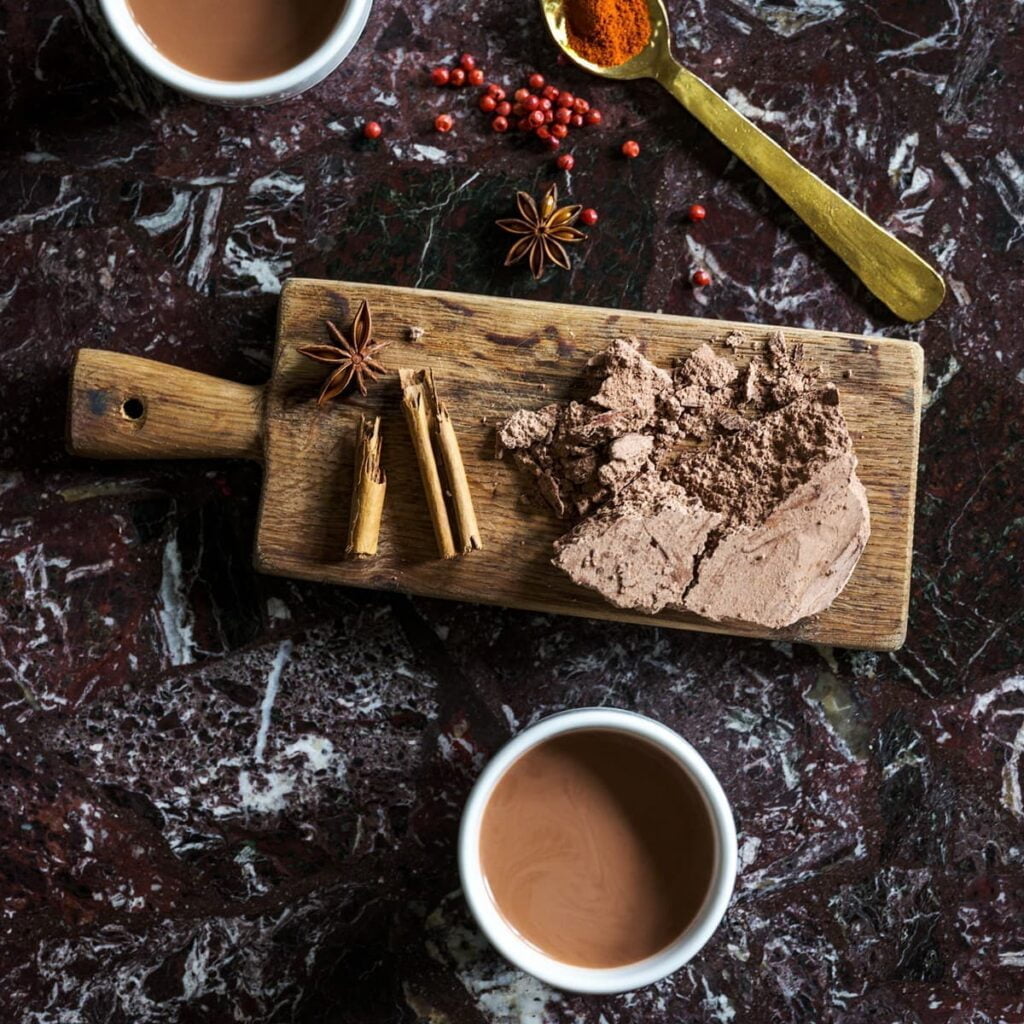

Natural Ceremonial Cacao prepared in a blender for one minute
Dissolved cacao
Dissolve 10-20g of cacao in a pot of hot water or plant milk (about 250ml). Note: the temperature should be around 70 degrees. Celsius! Keep an eye on it to make sure the concoction doesn’t boil over! The cacao will be thicker and more intense in flavour relative to the recipe with a blender. This is how cacao is most often prepared during ceremonies: it has properties that simultaneously calm and stimulate, and give a shot of positive, relaxing energy.
Cooked cacao
Dissolve 10-20g of cacaoin a pot of hot water or plant milk (about 250ml) and bring the substance to a boil. Cook for another 3 minutes. Such cacao retains most of its nutritional value, but is easy to digest and gently stimulates.
Cacao cooked for a long time
Dissolve 10-20g of cacao in a pot of hot water or plant milk (about 250ml), bring to a boil and cook for 30 minutes. Finally, add spices (e.g., vanilla, cinnamon) and honey. This cooking breaks down the fibre contained in the cacao and gives the drink a runny consistency.
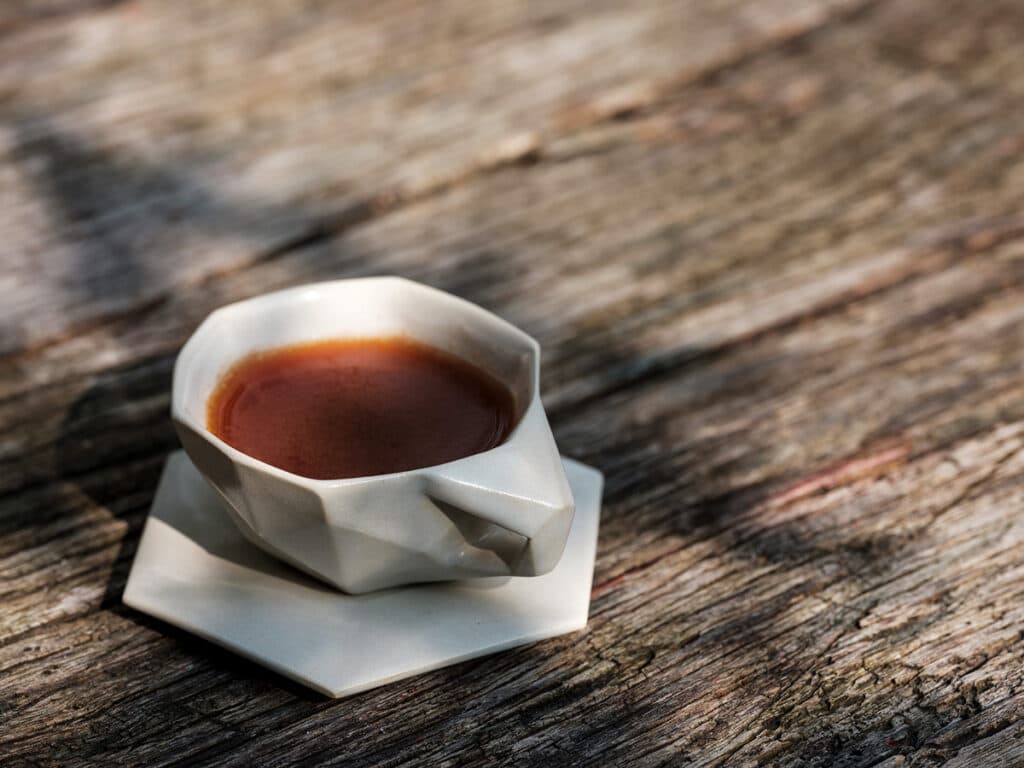

Boiled ceremonial cacao for 30 minutes
Downloadable ceremonial cacao recipe
Does cooking destroy the components of cacao?
Most of the active substances found in cacao have relatively high decomposition temperatures, so cooking them at 100 degrees Celsius does not harm them. Some vitamins, on the other hand, may decompose.
Learn about the properties of cacao.
Is cacao kosher?
Yes. According to this website: https://www.koszernapolska.pl/herbata-kawa-kakao, all 100% natural cocoa is kosher.
Do we dissolve cacao in cow’s milk or water?
It is definitely better to use water or plant-based milk, but cow’s milk can be used if it doesn’t harm anyone.
Does ceremonial cacao make you gain weight?
Ceremonial cacao is a high-calorie product, so drinking 20-30g in a beverage can replace a meal. However, it’s a meal full of valuable substances, so unless we add sugar to the cacao, it’s hard to call it fattening. There’s also some additional good news: after ceremonial cacao, one generally doesn’t feel like eating.
How many calories does 100% cacao have?
100 grams of cacao has approx. 600 kcal. If we assume that for a 250 ml mug, we need 20 grams of cacao, it will turn out that a proper mug of ceremonial cacao contains 120 kcal.
What can be added to ceremonial cacao?
Anything healthy and enjoyable to us, such as honey, vanilla (not vanillin), cardamom, nutmeg, chilli, or cinnamon.
Cacao protip: Do not boil cacao together with cinnamon, as the consistency of the prepared drink leaves much to be desired! It’s best to add cinnamon and other spices at the very end.
What are the contraindications for drinking cacao?
Real cacao is a mildly stimulating substance, so it is not recommended to drink it before bedtime or in combination with other stimulating substances (e.g., coffee) or medications affecting the nervous system. If in doubt, consult a doctor or pharmacist!
Can real 100% cacao be drunk by children?
Yes, they can, but the dose of cacao should be correspondingly smaller.
Can I drive a car after drinking cacao?
Yes, if you did not drink more than 40 grams. If so, it is best to wait a few hours.
How much ceremonial cacao can I drink?
The dose that is usually taken during a cacao ceremony is about 40-50 grams, and it is not recommended to exceed it. Ceremonial cacao tastes good with as little as 10-20 grams per cup.
How to drink cacao?
The cacao is drunk slowly, in small sips. Depending on your preference hot, warm or cold.
For the photos in this post, we thank Matthew Torbus of Torb.us – Culinary Photography
